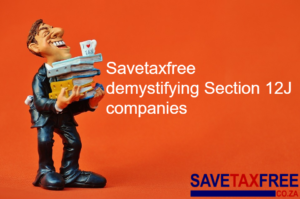Bad investments: is it time to fold?
Related Articles
Nonhlanhla Kunene | 11 November 2016
From tips to get you started to ideas on how to structure that killer portfolio and weather financial storms. When it comes to advice on finding the right investments for individual needs, investors are spoilt for choice.
There’s no shortage of information. A quick Google search will flood you with investment tips and strategies, the bulk of which are geared towards one goal: getting you to invest.
What you will struggle to find, however, is simple advice on what to do should things go pear shaped. What if that killer investment turns out to be a nightmare?
 In a world where investors are frequently warned against getting anxious over short-term volatility, how does an investor know when it’s time to let go of a bad investment?
In a world where investors are frequently warned against getting anxious over short-term volatility, how does an investor know when it’s time to let go of a bad investment?
Lize Visser, executive director of sales and client-centricity at PSG Wealth, says that because all investments come with some sort of risk it is easy to understand why in all portfolios, some investments end up being “good” or “bad”.
“An important characteristic therefore, of a prudent investor is the ability to not only to make wise investments, but also to have the discipline to dispose of ‘bad’ investments.”
When can you call an investment ‘bad’ and how do you evaluate this?
The answer, says Visser, depends on why you bought it, its role in your overall portfolio and a reasonable timeframe for an investment outcome for that specific investment.
Aneesa Razack, CEO of FNB Share Investing, considers volatility to be an inherent characteristic of stock market prices. She says that in the short term the stock market exhibits high levels of volatility, but in the long run it is relatively stable.
Razack believes investors should remember that they’re invested for the long term. Only when they don’t believe – with good reason – that their current investment will perform well over the long term should they consider disinvesting.
But what key factors should an investor take into consideration when deciding whether to hold on to or let go of a poor-performing investment?
For Razack, an objectives-based investment approach enables the investor to choose an appropriate investment vehicle, thus minimising the need for selling out of the investment at a later stage. “In addition, a well-diversified portfolio minimises the impact of one underperforming investment on the entire portfolio, thus reducing the risk exposure of the investor to stock-specific underperformance.”
Visser believes a few practical steps will help when it comes to reviewing investments, including those that may not be performing in line with expectations:
- Ensure you identify bad investments with the help of a professional financial adviser, as it’s possible to incorrectly classify an investment as good or bad without the right expertise. “Some bad investments may appear to be obvious, but it is important to understand the context of any perceived poor performance. For example, an investment that you may regard as bad due to the level of returns you are now receiving, may in fact generate excellent returns over a longer time frame.”
- Revisit the initial reason for investing and the plan that you had when you invested with your adviser.
- Try to establish the reason for the disappointing performance before deciding to dispose of the bad investment. “If you can identify the underlying reason, you will be better informed to make a sensible and rational decision. And the decision to dispose of it will be less stressful.”
- If you are relying on relative performance, be sure that you compare like with like. If it is a share and the equity market is generally down, then it may not be appropriate to compare its performance with say, a property or fixed income investment. The context or role of the type of investment you hold matters.
- Examine the factors that may influence a change in performance in future.
What about loss aversion? How do investors get past this fear of loss, which has often been the cause of many counterintuitive decisions?
Visser feels investors tend to spend more energy avoiding facing losses than they do taking corrective measures. “Some studies suggest that we weigh losses twice as much, psychologically, as we weigh gains,” she says.
Once you are sure that you have properly determined that elements of your portfolio are not performing acceptably over the timeframes that you initially set out and relative to their role in your portfolio, Visser believes it’s important to take decisive action.
Razack agrees, adding that investors tend to have a more vivid recollection of losses than gains, even when gains have been significantly more than the losses. “An investment strategy that is informed by the goals of the investor is the holy grail to protecting against this loss aversion. The investment strategy enables investors to manage their expectation and subsequently their emotions,” says Razack.
A general rule of thumb in dealing with poorly performing investments, says Visser, is to think about a price at which you would ideally sell when you first invest. This “stop loss” is the lowest price you will allow the investment to reach before selling. She advises that investors also consider a timeframe over which they can evaluate this.
Another consideration would be whether it’s time to sell a portion or the entire portfolio. “If the underlying reasons for poor performance are inherently short term in nature, you could consider disposing of a portion of this investment to buy more of the investment as the price reduces.”
Visser says this action would depend on each individual’s investment outlook, time horizon and conviction level on whether the investment is a good one. The idea is to sell at your stop-loss level but if you still believe it’s a good investment, buy back as the price falls. Then, once conditions become favourable, the investment should appreciate. “This strategy reduces the average cost of your overall holding of this investment.”
Lastly she warns that holding on to poor investments has costs and consequences and investors should avoid allowing regret or misplaced emotions to delay a decision to act.
“Don’t become immobilised by emotions of regret or the reasons you should have known it was a bad investment from day one. Nobody has perfect foresight when it comes to the future. If you have followed the rational steps explained above, you will be able to be less emotional about the fact that some investments perform better than others and you have taken all the steps you can to avoid long-term losses.”






